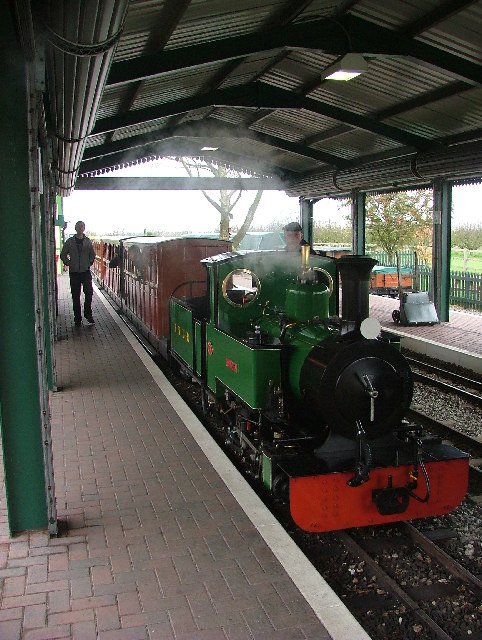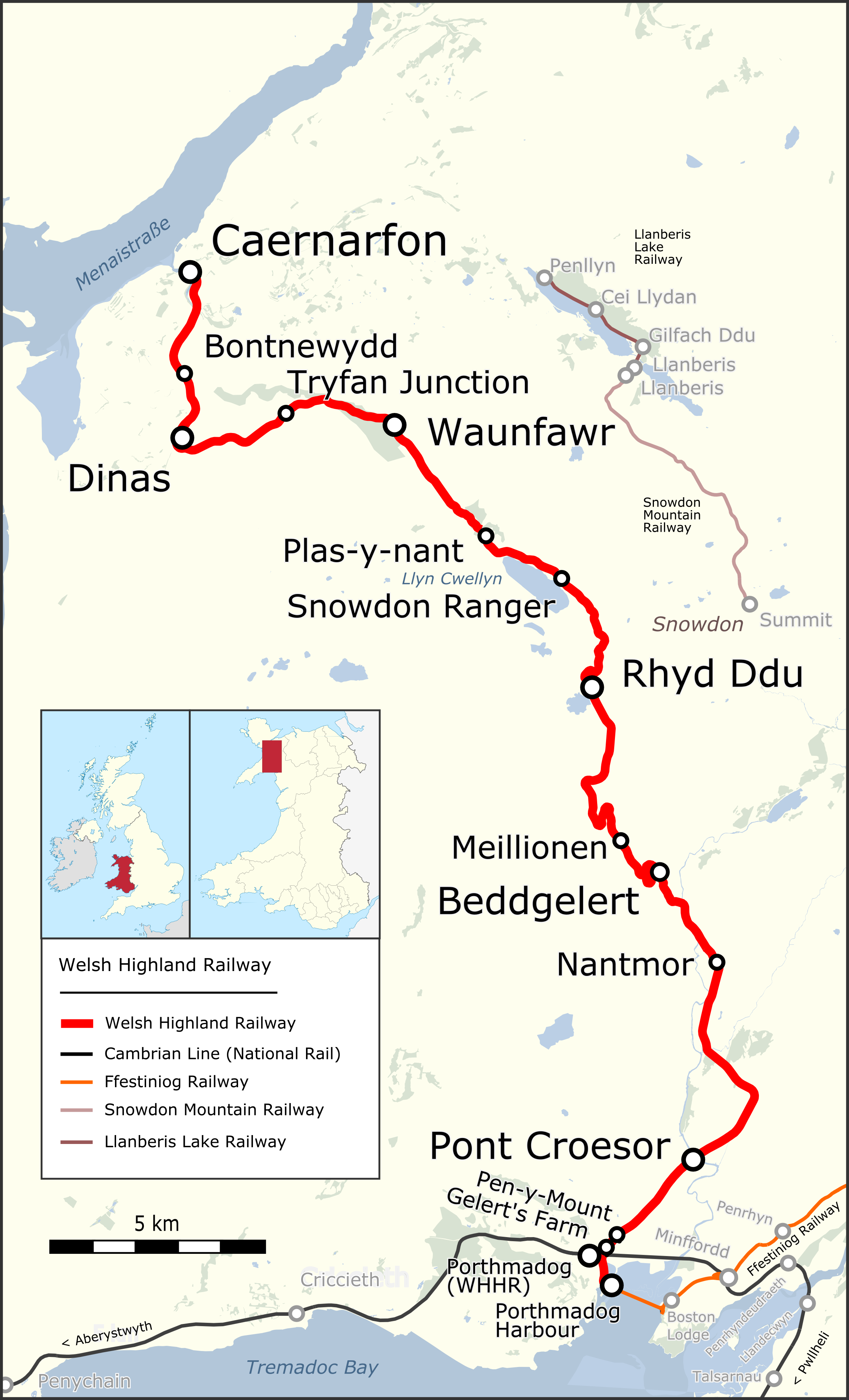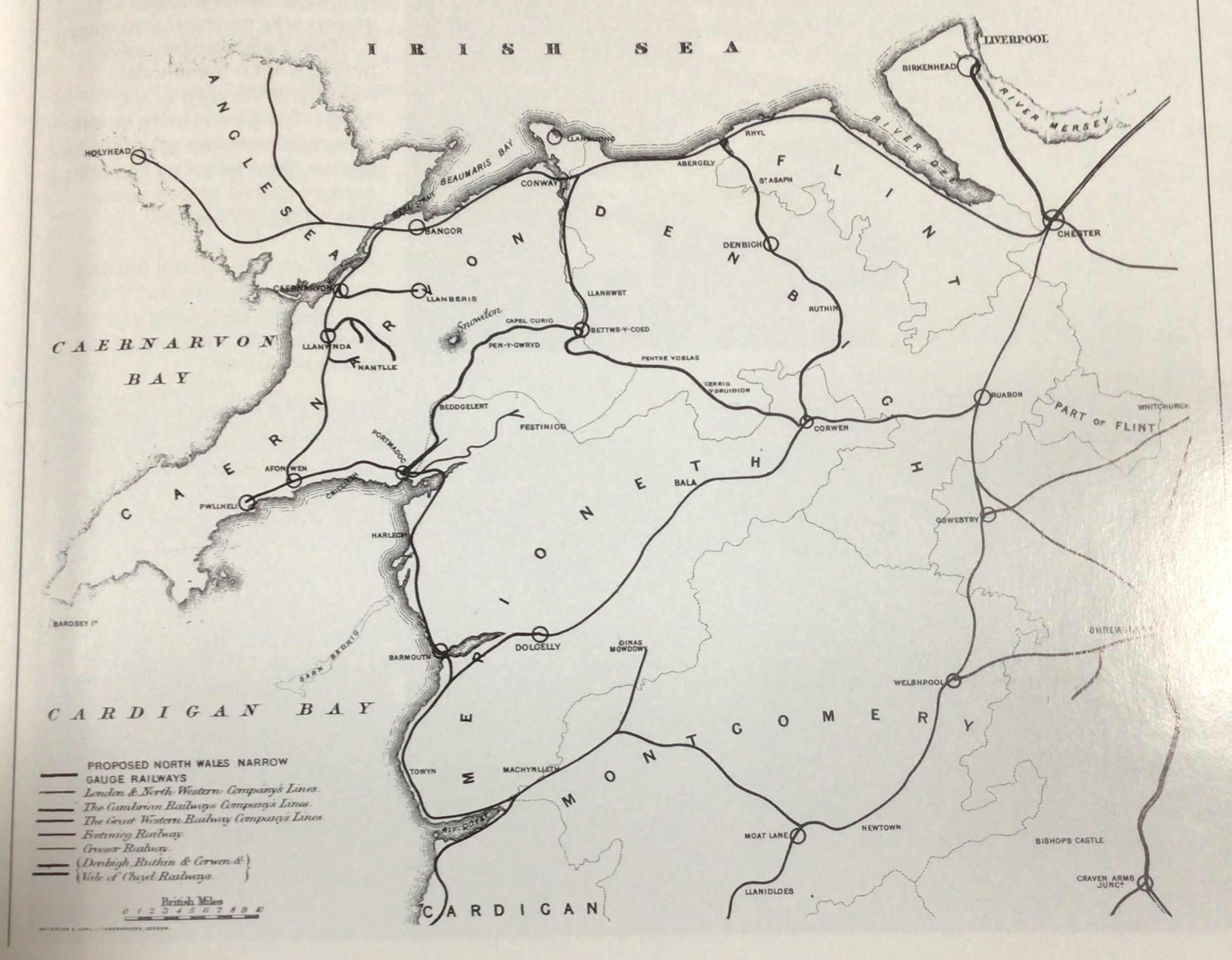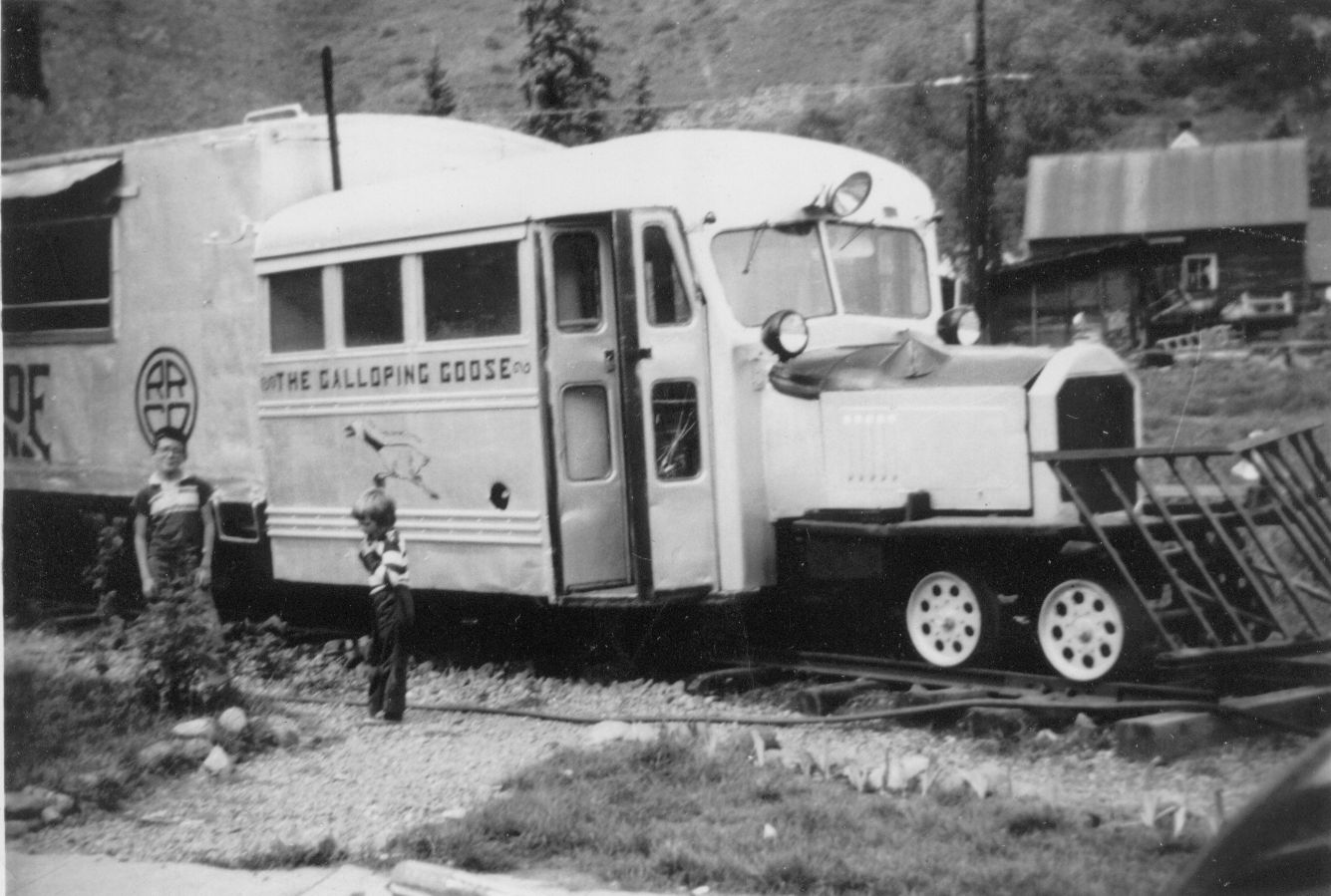|
Réseau Guerlédan
Réseau Guerlédan was a short-lived railway in Côtes-du-Nord (now Côtes-d'Armor) which operated from 1978 to 1979. History The Réseau Guerlédan was in length, laid to a gauge of . It ran along the abandoned metre gauge trackbed of the Réseau Breton (RB). Statutory powers to operate the line were inherited from the RB because lengths of rail had been left in place where there had formerly been level crossings. With the opening of the line, the Réseau Guerlédan became the smallest (in terms of track gauge) public railway in the world, taking the title from the Romney, Hythe and Dymchurch Railway. A fleet of British-built steam locomotives, based on famous narrow gauge designs were produced for use on the line, however only two steam locomotives saw service on the line. Closure The reason for the railway's closure was the occupation of the station at Caurel by the local mayor who subsequently let the facility to a member of his family. This seriously compromised the r ... [...More Info...] [...Related Items...] OR: [Wikipedia] [Google] [Baidu] |
Miniature Railway
A ridable miniature railway (US: riding railroad or grand scale railroad) is a large scale, usually ground-level railway that hauls passengers using locomotives that are often models of full-sized railway locomotives (powered by diesel or petrol engines, live steam or electric motors). Overview Typically miniature railways have a rail track gauge between and under , though both larger and smaller gauges are used. At gauges of and less, the track is commonly raised above ground level. Flat cars are arranged with foot boards so that driver and passengers sit astride the track. The track is often multi-gauged, to accommodate , , and sometimes gauge locomotives. The smaller gauges of miniature railway track can also be portable and is generally / gauge on raised track or as / on ground level. Typically portable track is used to carry passengers at temporary events such as fêtes and summer fairs. Typically miniature lines are operated by not for profit organisations - often mod ... [...More Info...] [...Related Items...] OR: [Wikipedia] [Google] [Baidu] |
2-6-2
Under the Whyte notation for the classification of steam locomotives, represents the wheel arrangement of two leading wheels, six coupled driving wheels and two trailing wheels. This arrangement is commonly called a Prairie. Overview The majority of American 2-6-2s were tender locomotives, but in Europe tank locomotives, described as , were more common. The first 2-6-2 tender locomotives for a North American customer were built by Brooks Locomotive Works in 1900 for the Chicago, Burlington and Quincy Railroad, for use on the Midwestern prairies. The type was thus nicknamed the Prairie in North American practice. This name was often also used for British locomotives with this wheel arrangement. As with the 2-10-2, the major problem with the 2-6-2 is that these engines have a symmetrical wheel layout, with the centre of gravity almost over the centre driving wheel. The reciprocation rods, when working near the centre of gravity, induce severe side-to-side nosing which results in ... [...More Info...] [...Related Items...] OR: [Wikipedia] [Google] [Baidu] |
Warwickshire
Warwickshire (; abbreviated Warks) is a county in the West Midlands region of England. The county town is Warwick, and the largest town is Nuneaton. The county is famous for being the birthplace of William Shakespeare at Stratford-upon-Avon and Victorian novelist George Eliot, (born Mary Ann Evans), at Nuneaton. Other significant towns include Rugby, Leamington Spa, Bedworth, Kenilworth and Atherstone. The county offers a mix of historic towns and large rural areas. It is a popular destination for international and domestic tourists to explore both medieval and more recent history. The county is divided into five districts of North Warwickshire, Nuneaton and Bedworth, Rugby, Warwick and Stratford-on-Avon. The current county boundaries were set in 1974 by the Local Government Act 1972. The historic county boundaries included Coventry, Sutton Coldfield and Solihull, as well as much of Birmingham and Tamworth. Geography Warwickshire is bordered by Leicestershire to the nort ... [...More Info...] [...Related Items...] OR: [Wikipedia] [Google] [Baidu] |
Evesham Vale Light Railway
The Evesham Vale Light Railway operates in Evesham Country Park in Worcestershire, England England is a country that is part of the United Kingdom. It shares land borders with Wales to its west and Scotland to its north. The Irish Sea lies northwest and the Celtic Sea to the southwest. It is separated from continental Europe b .... Locomotives References External links * {{coord, 52.1172, -1.9372, region:GB-WOR_type:landmark, display=title Miniature railways in the United Kingdom 15 in gauge railways in England ... [...More Info...] [...Related Items...] OR: [Wikipedia] [Google] [Baidu] |
Welsh Highland Railway
The Welsh Highland Railway (WHR) or Rheilffordd Eryri is a long, restored narrow gauge heritage railway in the Welsh county of Gwynedd, operating from Caernarfon to Porthmadog, and passing through a number of popular tourist destinations including Beddgelert and the Aberglaslyn Pass. At Porthmadog it connects with the Ffestiniog Railway and to the short Welsh Highland Heritage Railway. In Porthmadog it uses the United Kingdom's only mixed gauge flat rail crossing. The restoration, which had the civil engineering mainly built by contractors and the track mainly built by volunteers, received a number of awards. Originally running from , near Caernarfon, to ,Boyd (1972), pages=283 the current line includes an additional section from Dinas to Caernarfon. The original line also had a branch to and the slate quarries around Moel Tryfan, which has not been restored. (This branch forms a footpath "rail trail", the lower section of which has been resurfaced and supplied with heri ... [...More Info...] [...Related Items...] OR: [Wikipedia] [Google] [Baidu] |
Leek And Manifold Valley Light Railway
The Leek and Manifold Valley Light Railway (L&MVLR) was a narrow gauge railway in Staffordshire, England that operated between 1904 and 1934. The line mainly carried milk from dairies in the region, acting as a feeder to the system. It also provided passenger services to the small villages and beauty spots along its route. The line was built to a narrow gauge and to the light rail standards provided by the Light Railways Act 1896 to reduce construction costs. The route of the line is now a foot- and cycle- path. Route The North Staffordshire Railway's branch from Leek ended at Waterhouses (). The L&MVLR continued from an end-on junction with this line. It ran for down the valley of the River Hamps as far as Beeston Tor, before turning up the limestone gorge that the River Manifold had formed, through to Hulme End (). The line had a large number of stations in a relatively short distance, and there were refreshment rooms at Thor's Cave and Beeston Tor. In all the lin ... [...More Info...] [...Related Items...] OR: [Wikipedia] [Google] [Baidu] |
2-6-4
Under the Whyte notation for the classification of steam locomotives, a locomotive has two leading wheels, six coupled driving wheels and four trailing wheels. This arrangement is commonly called Adriatic. Overview With only a few known exceptions, the Adriatic wheel arrangement was usually used on tank locomotives, for which various suffixes to indicate the type of tank would be added to the wheel arrangement, for example for an engine with side-tanks. Tender locomotives The earliest known example was the South African Class 6Z, designed by Cape Government Railways (CGR) Chief Locomotive Superintendent Hazlitt Beatty in 1901. The first engines of the class were modified 2-6-2 Prairie locomotives which were equipped with two-axle trailing bogies. In 1902, more were placed in service, but built with the wheel arrangement. The latter were the first known tender locomotives in the world to be built with this wheel arrangement.Neilson, Reid works list, compiled by Austrian loc ... [...More Info...] [...Related Items...] OR: [Wikipedia] [Google] [Baidu] |
North Wales Narrow Gauge Railways
The North Wales Narrow Gauge Railways (NWNGR) was a railway company that planned to build a number of inter-connected narrow-gauge railways across North Wales. The first two of these lines - jointly known as the "Moel Tryfan Undertaking" - were authorised by Act of Parliament 1872 and were built and opened in the 1870s. The original main line ran from Dinas Junction to Bryngwyn and opened in 1877. The second line was a branch from Tryfan Junction to South Snowdon, though shortly after opening, the company designated the Tryfan Junction to Bryngwyn section as the branch, and the Dinas Junction to South Snowdon section as the main line. Routes built The company completed construction of two lines, The first, opened in 1877, was approximately long, running south-east from a junction with the London and North Western Railway's Caernarfon to Afon Wen branch at , to . There were intermediate stations at and . From Bryngwyn, a shallow incline Incline, inclined, inclining, or in ... [...More Info...] [...Related Items...] OR: [Wikipedia] [Google] [Baidu] |
0-6-4
Under the Whyte notation for the classification of steam locomotives, represents the wheel arrangement of no leading wheels, six powered and coupled driving wheels on three axles, and four trailing wheels on two axles. Overview The 0-6-4 wheel arrangement appears to have only been used on tank engines and Single Fairlies. The earliest known example was the Moel Tryfan narrow gauge locomotive, built for use on the North Wales Narrow Gauge Railways. It was a Single Fairlie type, built by the Vulcan Foundry near Manchester in 1875. It was followed by the R class and S class, built by the Avonside Engine Company of England for the New Zealand Railways Department between 1878 and 1881. Usage Australia The South Australian Railways K class locomotives were introduced in 1884, designed by William Thow. They were noted to run more smoothly bunker-first. After the electrification of the Mersey Railway in England, four of its 0-6-4T locomotives were sold to J & A Brown of New South ... [...More Info...] [...Related Items...] OR: [Wikipedia] [Google] [Baidu] |
Fairbourne Railway Mini Beddgelert
Fairbourne is a seaside village in Gwynedd, Wales. Located on the coast of Barmouth Bay in Arthog community, to the south of the estuary of the River Mawddach, it is surrounded by Snowdonia National Park. It is in an area that had been listed by Gwynedd Council for managed retreat due to rising sea levels. History Fairbourne is part of the historic county of Meirionnydd. The area was originally salt marshes and slightly higher grazing lands. Before development began in the mid-19th century, there were three farms on the land. The coastal area was originally known as Morfa Henddol, while the promontory outcrop now occupied by the Fairbourne Hotel was called Ynysfaig. Circa 1865, Solomon Andrews, a Welsh entrepreneur, purchased the promontory. Over the next few years, he built a seawall for tidal protection and several houses. To facilitate this, he built a gauge horse-drawn tramway from the main railway to the site in order to bring in building materials. In 1916, the tram ... [...More Info...] [...Related Items...] OR: [Wikipedia] [Google] [Baidu] |
Galloping Goose (railcar)
Galloping Goose is the popular name given to a series of seven railcars (officially designated as "motors" by the railroad), built in the 1930s by the Rio Grande Southern Railroad (RGS) and operated until the end of service on the line in the early 1950s. They were derived from full-sized automobiles. Originally running steam locomotives on narrow gauge railways, the perpetually struggling RGS developed the first of the "geese" as a way to keep its contract to run mail into towns in the Rocky Mountains in Colorado. There was not enough passenger or cargo income to justify continuing the expensive steam train service at then-current levels, but it was believed that a downsized railway would return to profitability. The steam trains would transport heavy cargo and peak passenger loads, but motors would handle lighter loads. Motors were not only less expensive to operate, but were also significantly lighter, thus reducing impact on the rails and roadbeds. This cost saving meant ... [...More Info...] [...Related Items...] OR: [Wikipedia] [Google] [Baidu] |
Rio Grande Southern Railroad
The Rio Grande Southern Railroad (reporting mark RGS, also referred to as "The Southern") was a 3 ft (914 mm) narrow-gauge railroad which ran in the southwestern region of the US state of Colorado, from the towns of Durango to Ridgway, routed via Lizard Head Pass. Built by Russian immigrant and Colorado toll road builder Otto Mears, the RGS operated from 1891 through 1951 and was built with the intent to transport immense amounts of silver mineral traffic that were being produced by the mining communities of Rico and Telluride. On both ends of the railroad, there were interchanges with The Denver and Rio Grande Railroad (reporting mark D&RG(W), later known as the Denver and Rio Grande Western), which would ship the traffic the RGS hauled elsewhere like the San Juan Smelter in Durango. For the first few years of its life, the RGS would have fallen under the definition of a "Bonanza Railroad" which meant it was an instant success, quickly generating more than enough m ... [...More Info...] [...Related Items...] OR: [Wikipedia] [Google] [Baidu] |








